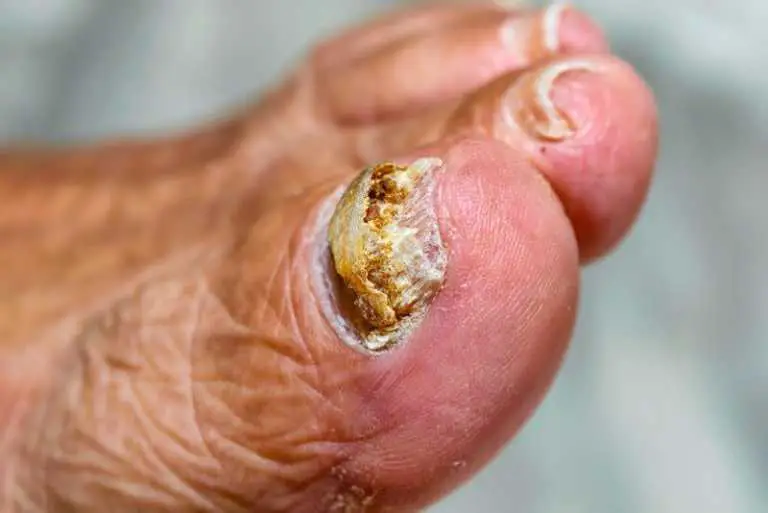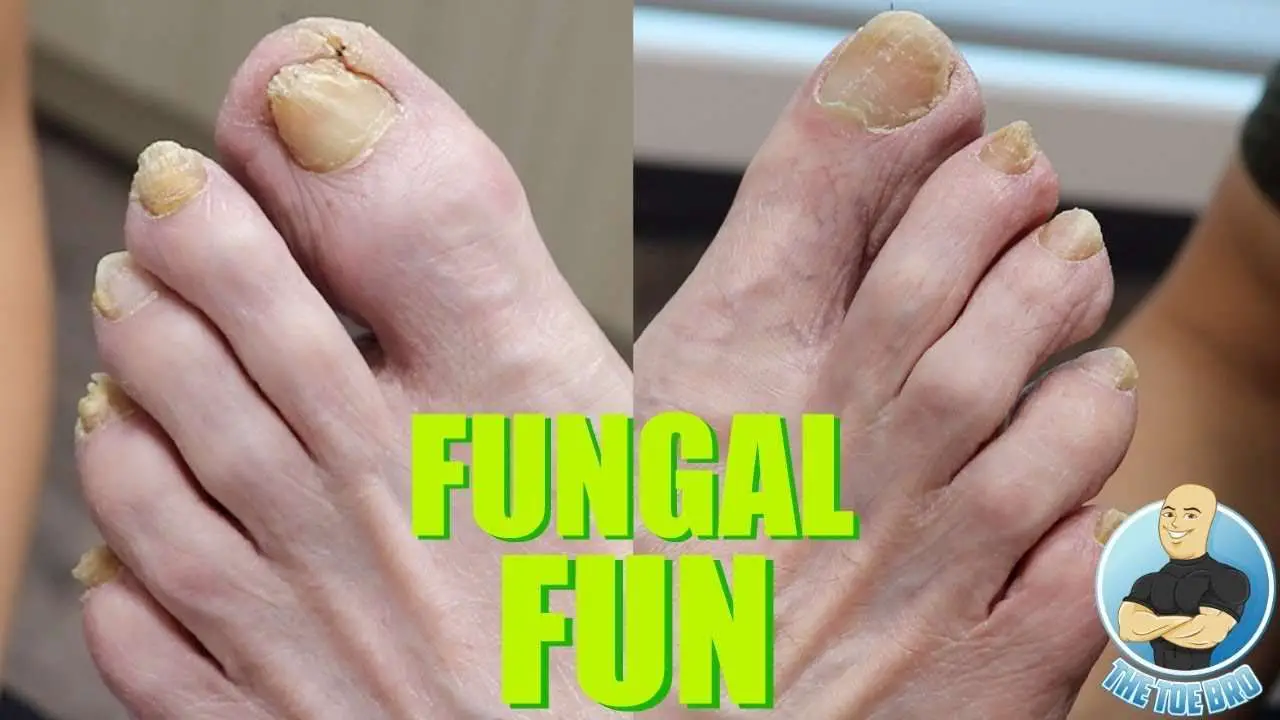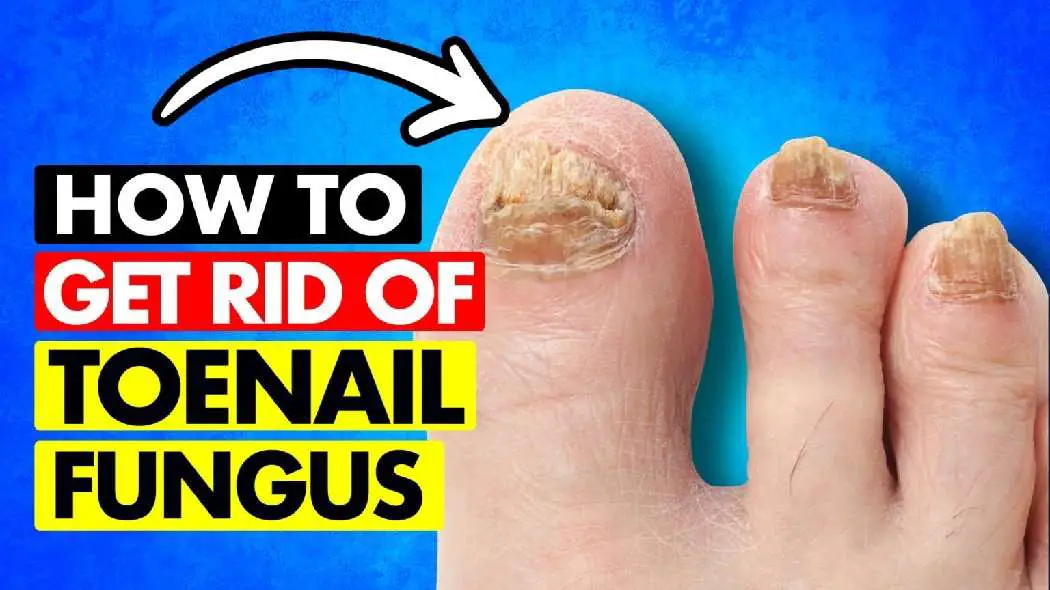How Effective Are Topical Treatments
So far, only a few studies have looked into topical nail fungus treatments with nail polishes or creams. Because these studies had weaknesses, the results should be interpreted with caution. Amorolfine has not yet been well studied. Ciclopirox polish and treatment sets with urea and bifonazole cream were tested in a few studies.
Research on the effectiveness of nail polish containing ciclopirox showed that, after one year:
- About 10 out of 100 people who did not use ciclopirox no longer had a detectable fungal nail infection.
- About 32 out of 100 people who used ciclopirox no longer had a detectable fungal nail infection.
In other words, treatment with ciclopirox got rid of the fungal infection in about 22 out of 100 people. But even if the fungus had gone away, the cosmetic result wasnt always satisfying. The nails only looked healthy after treatment in 7 out of 100 people.
Treatment with sets containing urea and bifonazole cream was tested in one study. It was compared with a treatment in which only urea cream was applied and the nail was removed, but without applying bifonazole cream afterwards. Three months after treatment was completed, it was found that:
- No fungus was visible or detectable in about 41 out of 100 people who only used urea cream.
- No fungus was visible or detectable in about 51 out of 100 people who used both urea and bifonazole cream.
Nail Fungus: Polish Cream Or Tablets
Nail fungus can be very persistent. Topical treatment with nail polish may take up to one year. Tablets for treating fungal nail infections usually have to be taken for several weeks or months. They are much more effective than topical treatments, but they have more side effects.
Brittle nails and a whitish-yellowish or brownish discoloration are typical signs of nail fungus. The nails may also become thicker and change shape. The affected part of the nail sometimes detaches from the nail bed. The treatment options for nail fungus include nail polishes and creams as well as tablets. Nail polishes and creams are available in pharmacies without a prescription.
Treating Fungal Nail Infection
Treatment may not be necessary in mild cases of fungal nail infection. For more severe or troublesome cases, antifungal medication may be recommended.
A fungal nail infection is unlikely to get better without treatment, but if you’re not bothered by it you might decide it’s not worth treating because treatment can take a long time, may cause side effects, and isn’t always effective.
Whether or not you decide to have treatment, you should still follow the self-help advice below to help stop the condition getting worse or spreading to others.
Read Also: How To Remove Contacts With Nails
Will A Nail Salon Treat Nails With Fungus
Nail technicians are familiar with nail infections of many kinds, so your fingernail or foot fungus wont surprise them. Onychomycosis in fingernails or toenails is more common than most people think, and many nail salons will provide a manicure and pedicure despite any nail infections you may bring with you. However, that they provide the service doesnt mean they should. A manicure and pedicure wont hurt an existing fungal infection, but its possible to spread it to other salon clients. Your best course is to alert the staff ahead of time so they may sterilize the equipment, including nail files and nail clippers, after use. If youre asked to bring your own nail kit, theyll tell you what tools to include. If your pedicure includes a foot bath, before you dip you toes into it, ask if the tub has been disinfected.
Onychomycosis is a stubborn infection that nail salons are not equipped to treat. And keep in mind that, while a case of athletes foot will usually respond well to an antifungal or other over-the-counter treatment, a medical professional can deal most effectively with a toenail fungus infection.
Manicure And Pedicure Pampering

Every good manicurists toolkit includes acrylic nails, and artificial nails, clippers, nippers, nail files, orange sticks, and a deft touch with nail polish application and cuticle treatment. A nail technician will remedy ingrown toenails and calluses, and reassure you that the nail discoloration you point out is probably no more than residue from a coat of nail polish recently removed.They cannot treat or cure a fungal infection. But infections may often begin in nail salons where the same implements are used on many clients without sterilization. Be sure to ask your salon if they thoroughly sterilize tools after each manicure and pedicure.
Regular visits to your nail salon may help prevent fungal nail infections by keeping nails trimmed and clean. But pay quick attention to any injuries from clippers or other tools received during your manicure or pedicure. A small nick or break in your skin, nail bed, or cuticle could allow a nail to become infected or even allow bacteria to enter your bloodstream and cause serious health problems or aggravate an existing health condition.
Recommended Reading: How To Get A Child To Stop Biting Their Nails
Possible Causes Of Yellow Nails
If your nails have been damaged by dyes or harsh products, new nail growth should be a healthy, clear color. If your nails continue to be yellow, there may be something else going on in your body. Sometimes having yellow nails can be an indication of something more serious. Vitamin or mineral deficiencies can cause nails to appear yellow, and introducing a multivitamin supplement to your regiment may stop the problem.
In some cases, nails that remain yellow despite repeated treatment can be a symptom of thyroid conditions, psoriasis, or diabetes. In rare situations, yellow nails can indicate the presence of skin cancer. A condition called yellow nail syndrome is indicated by continually yellow nails and respiratory or lymphatic problems.
Nail Anatomy And Onychomycosis Infection
Figure 1 shows the composition of the nail, including the nail plate , nail bed and nail matrix.
Figure 1: Nail anatomy and physiology
The nail plate and nail bed are joined by layers of hard, translucent, keratinised cells. The nail bed and nail matrix are vascular components of the nail, with nail cells located within the nail matrix where the nail plate is formed. The thickness of the nail plate determines the length of the matrix
- Apply cosmetic nail varnishes or artificial nails
- Walk without footwear in public areas
- Cut nails too short.
Also Check: How To Remove Contact Lenses With Nails
What Causes Nail Fungus
Nail fungus occurs when fungi, yeast, or mold infect the skin. These types of infections are more likely to affect toenails than fingernails, and can be associated with athletes foot. Symptoms typically include white, brown, or yellow discoloration of the nail or thickening, cracking, and/or brittleness of the nail. If left untreated, the area of the infection can become painful.
There are several risk factors for developing nail fungus: tight shoes damaged nails walking barefoot in moist areas like swimming pools, saunas, and public showers poor blood circulation in your legs a weakened immune system and other skin conditions, such as psoriasis. You may even have a genetic predisposition to developing nail fungus.
Here at North Central Texas Foot & Ankle, well assess your specific case, perform tests to get to the bottom of the issue, and determine which treatment to provide you based on the test results.
When Should You Call Your Doctor
- Increased pain, swelling, redness, tenderness, or heat.
- Red streaks extending from the area.
- Discharge of pus.
- Fever of 38°C or higher with no other cause.
- A fungal infection appears to be spreading to the skin under the nail, the nail itself, or the surrounding skin.
- The infected area is painful.
- A thickened toenail causes discomfort.
- Your nail’s appearance concerns you.
If you think you have a fungal nail infection, see your doctor. Your doctor can check your nail and recommend ways to treat it.
Also Check: How To Remove Contact Lenses With Nails
What Is Toenail Fungus Exactly
Toenail fungus happens when tiny microscopic organisms called fungi get underneath your toenails, causing an infection, according the American Academy of Dermatology .
Not-so-fun fact: The same fungus that causes jock itch and athletes foot can also cause toenail fungus, which can infect your nails and the skin underneath, says Gary Goldenberg, MD, assistant clinical professor of dermatology at the Icahn School of Medicine at Mount Sinai Hospital in New York.
Depending on the type of fungus youre dealing with, an infection can cause a slew of unpleasant symptoms, including:
- Nail discoloration
- Debris buildup underneath the nail
- Lifting of the nail from the skin
- Nail thickening or crumbling
- Nail thinning or splitting
Toenail fungus is highly contagious and, if you have a fungal infection on your foot, the fungus can spread to one or more of your nails.
Home Remedies For Fingernail Fungus Infection Best Natural Treatments:
Fingernail fungus could be downright terrifying so that people not only have to see but also experience the awful symptoms, causing uncomfort to patients. Scientifically called tinea unguium oronychomycosis, fingernail fungus is a relatively popular as far as nail infection that many people are concerning about. Some of the trigger factors that lead to fingernail fungus are included but not limited to former nail injuries, abundant perspiration, genetics, and several health diseases and problems I personally had my friend and family member who used to suffer from fingernail fungus simply because they did not wear gloves while using harsh cleaning products. Trust me, it was really terrible. The situation can turn to be painful, embarrassing, and all-around nasty rapidly. Thus, you will need to take extra care while treating this problem. I know that this is a very popular issue for individuals, so I have decided to collect information and combine the best home remedies for fingernail fungus infection in an only list that can definitely help you save a lot of money and efforts spending on a laser therapy to deal with fingernail fungus. Women should not forget that acrylic nail is also well-known to cause high risks of developing fingernail fungus. Just with a simple google image search, you will find out several pictures that will surely make you re-think about whether or not you should use artificial nails.
Read Also: Vitamin E For Toenails
Natural Ways To Deal With Nail Fungus
Fight the funk.
This article was written by Hallie Levine and provided by our partners at Prevention.
That pedicure you shelled out big bucks for may have left you with an unwelcome gift: onychomycosis, otherwise known as nail fungus. Or maybe it’s a souvenir from the shared showers at your gym or your barefoot walks around the public pool. Although it starts innocuously enough, as a white or yellow spot underneath your finger or toenail, your nail can start to thicken and even crumble as the fungus penetrates deeper and deeper. Ick. And fungus is more likely to appear and persist in your toenails because your tootsies are often confined in the warm, moist environment of your shoes, where these little buggers can thrive.
If you see a dermatologist, you’ll most likely get a prescription for an antifungal oral medication such as Lamisil or Sporanox, which tend to be expensive, don’t always work, and carry side effects ranging from skin rashes to potentially toxic liver damage. “That’s not pleasant, which is why so many people look for a drug-free alternative,” says Joe Graedon, a pharmacologist at the UNC Eshelman School of Pharmacy at Chapel Hill and author of The People’s Pharmacy. There are newer topical treatments, such as Kerydin, but they also require a prescription and can take up to a year to work. Here are some of Graedon’s top drug-free remedies for toenail fungus.
What About The Cost Of Oral Medications For Fungal Nails

A further consideration is cost. Because newer oral antifungal agents are very expensive, some insurance companies balk at paying for what they consider a “cosmetic issue,” unless nail fungus causes pain or other functional symptoms. Terbinafine and fluconazole are now available as generic drugs and are quite inexpensive.
You May Like: How To Remove Nail Glue
Doctors Weigh Best Treatments
The best treatment for fungal nail infections is a prescription that your dermatologist can prescribe that you take every day for two-to-three months. The pill is not for everyone, since oral antifungals can interact with other medications and can affect the liver.
Fortunately if you dont want to or cant take a pill, there are topical solutions to treat nail fungus. Although topical medications are desirable because of the low risk of side effects and interaction with other medications, they have much longer treatment regimens. Generally, topical medications have a lower clearance rate compared to oral pills.
Newer topical antifungals including Efinaconazole and Tavaborole have better penetration of the nail plate and so they work better compared to older topical medications, says Dr. Ng. She says the topical medications work best if you only have partial nail involvement.
Lasers are approved by the FDA to temporarily increase the amount of clear nail. However, the cure rates are lower than oral medications and topical solutions.
Toe Caps For Toenaol Fungus Drinking Apple Cider Vinegar To Kill Skin Fungus
How To Prevent Toenail Fungus From Spreading Soaking Feet In Listerine For Toenail Fungus Heal. Can I Still Use Toenail Polish With Toenail Fungus Patchouli Essential Oil For Toenail Fungus Dead Skin And Fungus In The Ear. Podiatrists Who Use Blue Laser For Toenail Fungus In Nh Cost Of Laser For Toenail Fungus Nail Fungus Help.
Recommended Reading: Damage Free Hanging Shelves
Home Remedy: Using The Urea Paste
For mild cases of toenail fungus infections, there are home remedies that can be tried. These can be more accessible and affordable at the same time. Examples of these include tea tree oil, Epsom salt, snakeroot extract, sunflower oil, etc. One of these is a 20 percent urea paste which can help in dissolving the nails infected part. Once the substance is dissolved, you may follow up treatment with an over-the-counter antifungal cream. It is best to check with the dermatologist or podiatrist before starting this treatment. After a part or the entire nail is removed, the area becomes more susceptible to infection.
Urea is also known as carbamide. It is an organic chemical compound that was synthesized in 1828. It is considered one of the most basic and significant chemicals that can be used in healthcare today. Apart from the medical uses, urea paste is also used as a resin in creating plywood. It also functions as an adjunct in animal feed. It is also used as a major ingredient in making pretzels.
The primary uses of urea paste are in the field of medicine. It is used in preparing the skin to soften keratin, and in the treatment of psoriasis, corns, calluses, and eczema. It is also used in making pretzels to have a distinctive brown color. Urea is helpful in the treatment of thick and dystrophic fungal nails. Around 40 percent of urea debrides the infected nail and leaves the healthy one intact.
How To Use It
Apply mentholated ointment directly to the affected nail. Do this about once a day for several weeks or until the nail shows noticeable improvements.
Vinegar is a common household product found in cooking and some home cleaning solutions. Though no clinical evidence exists to date, there is anecdotal evidence to suggest that vinegar is an effective tool to help treat toenail fungus.
Read Also: Where To Donate Nails And Screws
Is It Possible To Prevent The Recurrence Of Nail Fungus
Tinea pedis, also known as athlete’s foot or foot fungus, can cause recurrence of fungal nails. Therefore, it is important to manage this condition. One can apply over-the-counter antifungal medicines such as clotrimazole or terbinafine cream as directed to affected skin. Keeping footwear and socks clean can be helpful. You can also use portable UV light sanitizers to disinfect shoes.
How Do I Know If I Have A Fungal Nail Infection
Because other infections can affect the nail and mimic symptoms of a fungal nail infection, the only way to confirm a diagnosis is to see a doctor. Theyll take a scraping of the nail and look under a microscope for signs of fungus.
In some cases, your doctor may send the sample to a lab for analysis and identification.
Over-the-counter products arent usually recommended to treat nail infections since they dont provide reliable results. Instead, your doctor may prescribe an oral antifungal medication, such as:
- terbinafine
Read Also: Seal Color Street With Flat Iron
Can A Nail Fungal Infection Be Prevented Or Avoided
Avoid situations that expose you to a fungus. This includes walking barefoot in locker rooms and having wet hands and feet often. This might be a problem for people who work in restaurants or house cleaning. People in a family can get nail fungal infections at the same time. This happens when their immune systems arent able to fight off the infection. Or it could be the infection is spread when using the same towels. It is important to routinely clean your shower, tub, and bathroom to lower risk of fungal infection.
What Other Conditions Can Be Mistaken For Fungal Nails

Here are some other conditions you may have instead of fungal nails:
Trichophyton
Recommended Reading: How Do I Get Nail Polish Out Of Clothes
